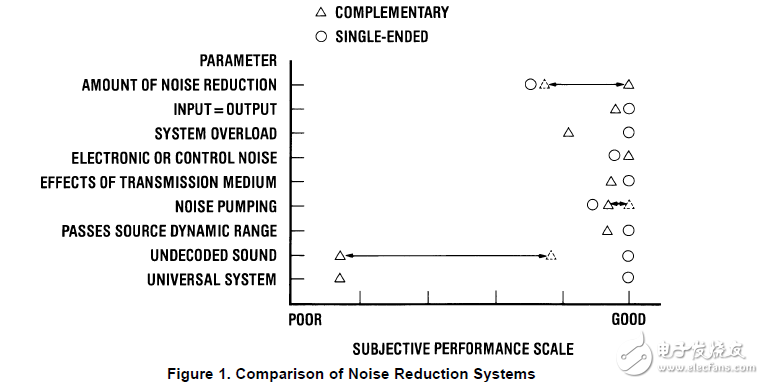
资料下载

AN-384音频降噪和掩蔽
Introduction
Audio noise reduction systems can be divided into two basic approaches. The first is the complementary
type which involves compressing the audio signal in some well-defined manner before it is recorded
(primarily on tape)。 On playback, the subsequent complementary expansion of the audio signal which
restores the original dynamic range, at the same time has the effect of pushing the reproduced tape noise
(added during recording) farther below the peak signal level—and hopefully below the threshold of
hearing.
The second approach is the single-ended or non-complementary type which utilizes techniques to reduce
the noise level already present in the source material—in essence a playback only noise reduction
system. This approach is used by the LM1894 integrated circuit, designed specifically for the reduction of
audible noise in virtually any audio source.
While either type of system is capable of producing a significant reduction in audible noise levels,
compandors are inherently capable of the largest reduction and, as a result, have found the most favor in
studio based equipment. This would appear to give compandors a distinct edge when it comes to
translating noise reduction systems from the studio or lab to the consumer marketplace. Compandors are
not, unfortunately, a complete solution to the audio noise problem. If we summarize the major desirable
attributes of a noise reduction system we will come up with at least eight distinct things that the system
must do—and no system as yet does all of them perfectly.
• The reproduced signal (now free of noise) is audibly identical to the original signal in terms of
frequency response, transient response and program dynamics. The stereo image is stable and does
not wander.
• Overload characteristics of the system are well above the normal peak signal level
• The system electronics do not produce additional noise (including perturbations produced by the
control signal path)。
• Proper response of the system does not depend on phase/frequency or gain accuracy of the
transmission medium.
• System operation does not cause audible modulation of the noise level.
• The system enables the full dynamic range of the source to be utilized without distortion.
• The recorded signal sounds natural on playback—even when decoding is not used. This means that
the system is compatible with existing equipment.
• Finally, the system is universal and can be used with any medium; disc, FM broadcast, television
broadcast, audio and video tapes.

声明:本文内容及配图由入驻作者撰写或者入驻合作网站授权转载。文章观点仅代表作者本人,不代表电子发烧友网立场。文章及其配图仅供工程师学习之用,如有内容侵权或者其他违规问题,请联系本站处理。 举报投诉
- 相关下载
- 相关文章







